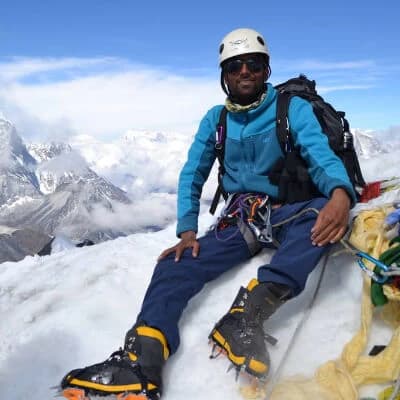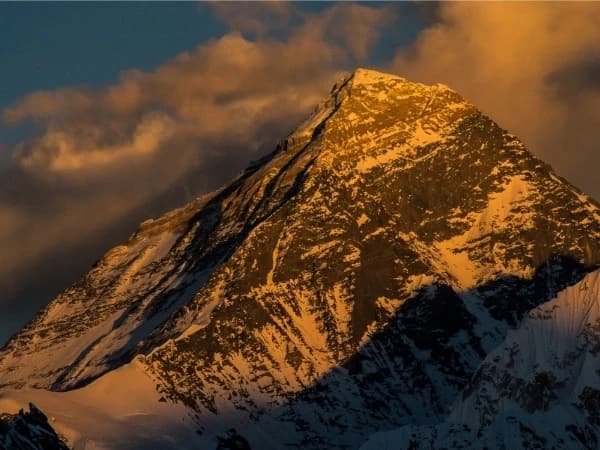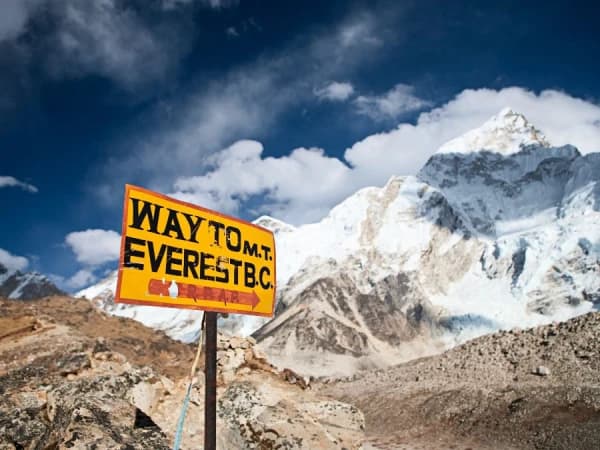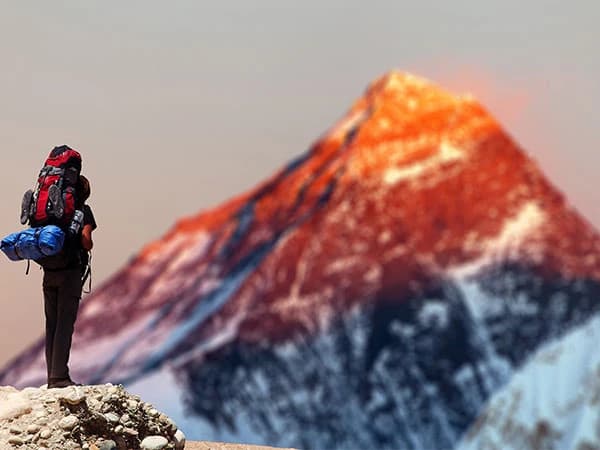As there are many mountains around the world, some mountains inspire poetry and others inspire fear, but some of the legendary mountains whisper one of the deadliest. Most of the climbers know these legendary mountains as the mountains that claim lives. The frozen incline sparkles like polished silver and the winds here roar like warnings. Many climbers have tried to climb, but only a few were able to return, so the world knows it by a name ‘The Killer Mountain’.
Which is the Killer Mountain?
When Dreams Meet Death
Through countless ages, Mountains have served as the symbol of freedom, a timeless secret and a threshold of human capacity. Mountains are not just towering walls of ice and stone. For every climber, mountains are living giants that test courage and teach respect for nature's power. Every journey begins with an ambition for recognition, but frequently ends with a warning that nature remains unconquered. The line between achievement and misfortune on these frozen heights is as thin as the air itself.
The ambition of climbing to the top of the world's tallest peaks is filled with stories of courage beyond measure and significant misfortune. The Himalayas and the high peaks of the Karakoram have stood witness to the crushing heartbreak of watching companions disappear into the mountains' deadly embrace. Due to these extremes, the name Killer Mountain was born and given to the mountains that have claimed more lives than it has granted summit.
Every mountain is renowned for its unique features. Everest claims fame and K2 earns fear for its technical challenge and one of the mountains becomes closely associated with death itself: Nanga Parbat is known as the Killer Mountain. Nangas' beauty hides a brutal and unforgiving spirit with its history and a saga of loss and suffering.
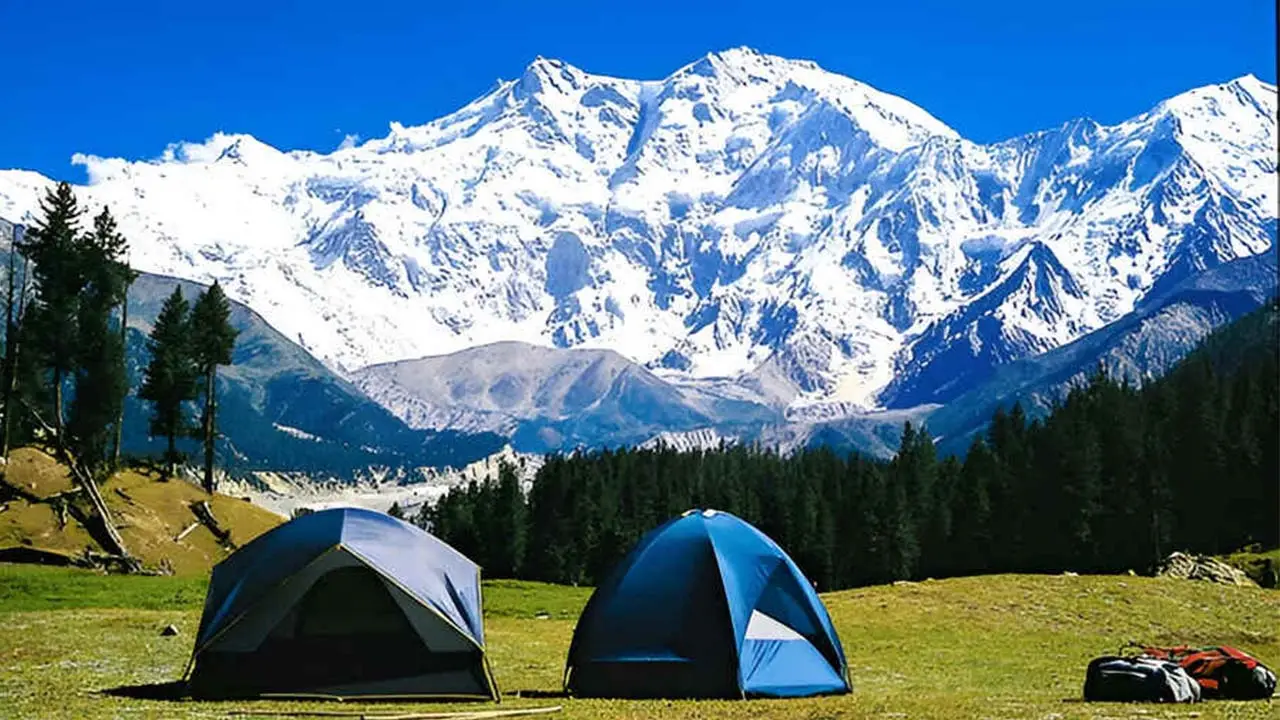
Peaks That Kill: Understanding the Deadly Majesty of Mountains
The title Killer Mountain is not given to every mountain that kills. To determine the reason, we must first look at understanding what makes it risky in the world of high-altitude climbing. Deaths in the mountains are not just a matter of numbers; it is a mixture of altitude, weather, remoteness and the mortality of humans.
Mountains become deadly when the percentage of climbers who die is higher compared to those who attempt to summit and reach a terrifying level. For example, once Annapurna I recorded a remarkable 32% fatality rate, which means nearly one in three climbers never came back. Another mountain, K2, is often called the Savage Mountain, which averages around 25% of the fatality rate, with unpredictable weather and difficult routes. Even though Mount Everest is the most climbed mountain still it has claimed over 330 lives. The Death Zone of Everest, above 8,000 meters, is covered with lifeless bodies preserved in ice.
Still, the number of lifeless bodies tells only half the story. In some of the peaks, even if data suggests it is safer, it is a haunt for climbers with fear that no data can measure. The blend of a high-risk environment, sudden avalanches and altitude sickness, with extreme isolation of these mountains, creates conditions demanding survival.
And standing out among them, one peak stands out not only for danger but for its ghostly inheritance. That mountain is Nanga Parbat, where history, ambition and tragedy combine on all frozen cliffs.
Nanga Parbat: A Mountain of Harsh Legacy
Towering in the Western Himalayas in Gilgit-Baltistan, Pakistan, the Nanga Parbat stands at 8,126 meters (26,660 feet). It is the world's ninth-highest mountain. The name is derived from Sanskrit, which means Naked Mountain, " a reference to its barren glacial slopes. Still, for many mountaineers, its name carries a far darker weight: Killer Mountain.
What sets Nanga Parbat apart is not just its height, but its towering vertical walls. The majestic Rupal Face, which is often called the tallest mountain face on Earth. This mountain face rises over 4,600 meters(15,000 feet) from the base summit. Climbers have to face relentless ice walls, precarious ridges, and avalanche-prone slopes, which demand perfect timing and skill. In this region, a climber's misstep can be fatal.
The region's geography and weather combine to create a perfect violent surge of hazards. Sudden snowstorms in the Himalayas, frozen fog and high-altitude winds make survival unpredictable. In the 20th century, German adventurers repeatedly attempted to conquer it, but numerous journeys ended in calamity.
Standing apart from Everest, whose reputation is founded on success, while Nanga Parbat's fame is etched in fear, failure, and fatal misadventures. Each journey lost to the mountain added another layer to its frightening reputation. The mountains' dark seduction still draws those who are seeking glory and danger and are willing to face almost certain danger for the thrill of standing at the top of the deadliest peaks in the world.
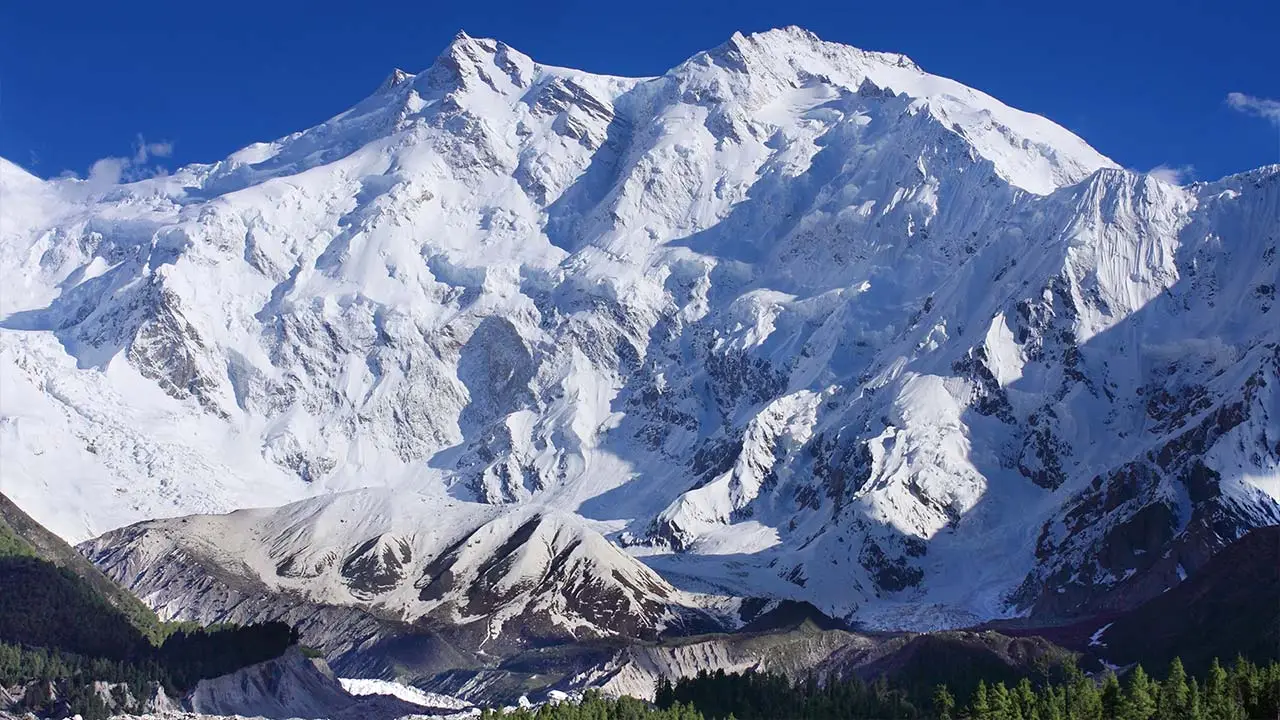
Perilous Beginnings: German Climbers on Nanga Parbat
The legend of Nanga Parbat as the renowned Killer Mountain began in the early 20th century with a series of German adventurers. Mountaineers from Germany repeatedly misjudged its might with their obsession with conquering this peak. The mountains' unforgiving force of nature claimed lives in breathtaking numbers.
In 1934, under the leadership of Willy Merki, one of the most dangerous expeditions was conducted. A heavy storm trapped the team on high slopes. In this accident, 16 sherpas and 7 German climbers lost their lives. The whole world watched as the bodies froze on the mountain at a distant, imposing giant. Their absence is resonating like a ghost among mountaineers.
Earlier attempts across every stretch of the 1930s and 1940s have already added dozens of climbers' names to Nanga Parbat's historical record of misfortune. Between the years 1895 and 1953, over 30 climbers died without a single successful summit. Nanga Parbat earned the nickname “the mountain that kills” long before mortal footsteps marked its snow.
Despite the dark chapters, their resolve never wavered. In 1953, Hermann Buhl, who was an Austrian climber, achieved the first successful ascent by himself without supplemental oxygen. His daring ascent echoed through generations. What made it unforgettable was not only its daring but the decade of sorrow that came before it. Yet even Buhl's victory failed to clean the mountain of its dark legacy. Every expedition that followed reminded climbers that success here is measured in survival, not summits.
Shadows of Loss: Messner and the Modern Era
Many years later, after the early German missions, the Killer Mountain, Nanga Parbat, continued to cause several losses. In the year 1970, legendary climber Reinhold Messner and his brother Gunther Messnerattempted a courageous ascent along the tough Diamir face. During the summiting of the peak, Reinhold survived, but Gunther was swept away by an avalanche during their downward journey. This devastating event haunted Reinhold for years, adding another chapter to the mountain's dark history.
The mountain's hazardous legacy is beyond climbing accidents. In 2013, the base camp, scarred by the attack, became a chilling reminder of the region's dangers beyond the mountain itself, resulting in the deaths of 10 foreign climbers. The killings reverberated across the mountaineering community. This incident reminds us that the mountain's menace stretches beyond the ice and snow.
Nanga Parbat's history combines human determination with the mountain's unforgiving power.
Due to avalanches, storms and rockfalls, mountains have claimed countless lives. While its icy slopes test the body, the mountain's psychological weight tests the soul. Most of the climbers often speak about the mountain's presence as a silent threat that keeps experienced climbers tense and alert.
The mixture of echoes of past disasters and shadows of modern tragedies is the reason why Nanga Parbat's legends cast a long shadow over the mountaineering world. Compared to other hazardous mountains, Nangas' identity is not only statistical but also emotional. The peak carries the weight of every lost life, every dream ended prematurely, and every climber who dared to confront the technically demanding frozen slopes.
You May Also Like:
- Why is Annapurna So Dangerous? | Risks, Avalanches & Survival
- Is Annapurna Part of Everest? The Himalayan Truth Unfolded
The Peaks That Define Mountaineering: Annapurna, K2, and Everest
While the nickname Killer Mountain is earned by Nanga Parbat, there are other peaks competing for the realm of deadly climbs. Among them are Annapurna I, K2 and Mount Everest stand out for their combination of risk, difficulty, and loss of life.
Annapurna I is located in Nepal; according to data, it is also the deadliest 8,000-meter peak. The earliest forays into the mountains recorded a death rate of approximately 32% mostly because of slopes that unleash avalanches without warning. Against all modern precautions, the mountain remains unforgiving, and climbers still face extreme danger on the precipitous slope, unstable faces that make Annapurna an unrelenting challenge to strength and will.
K2 is towered at 8,611 meters, which is also the world's second-highest mountain. It is also known as a savage mountain. Its technical difficulty is legendary, and sheer rock face, icefall threats, and severe weather make it one of the toughest peaks to climb. The death rate hovers around 25% because of harsh weather and altitude-related illness, claiming many lives.
Mount Everest is the world's tallest peak at 8,848 meters, and has claimed 330 lives. Still, its popularity and relatively safer routes lower the death rate to roughly 3-4%. Even in the shadow of countless deaths, the mountain's fame outshines its fear.
While gauging the differences, Nanga Parbat maintains a separate identity not just statistically but historically and psychologically. Nanga Parbat challenges both body and spirit, while Annapurna and K2 challenge the body. It leaves an unforgettable mark on mountain stories.
Factors Behind Continued Mountaineering Risks
Regardless of Nanga Parbat's terrifying reputation, it continues to attract climbers from around the world. You may wonder what drives people to risk their lives and climb on a mountain that has claimed countless lives. The key is in a tangled web of ambition, passion and the mountains' irresistible promise.
Nanga Parbat represents the ultimate test of skill and endurance for many climbers. Reaching the summit is beyond personal success, marking the mountain as a living proof of nature's deadly allure. The mountain's dark past makes every summit a story of extraordinary courage. A successful ascent of Nanga Parbat forms a memorable narrative, a legacy embedded in rock and ice.
Nowadays, technology has advanced, such as improvements in climbing gear and weather forecasting has made mountains more welcoming and approachable. The risks are still present in the mountain avalanches, sudden storms and sheer vertical faces continue to test highly trained mountaineers.
In the depths of the mind, some mountaineers are drawn to danger itself. High-altitude expeditions teach that extreme danger enhances mental clarity and determination. For these climbers, the mountain is a guide and a test, distinguishing the ready from the unready and the courageous from the rash.
In the final analysis, the urge to conquer Nanga Parbat reflects the never-ending battle between chasing glory and facing death.
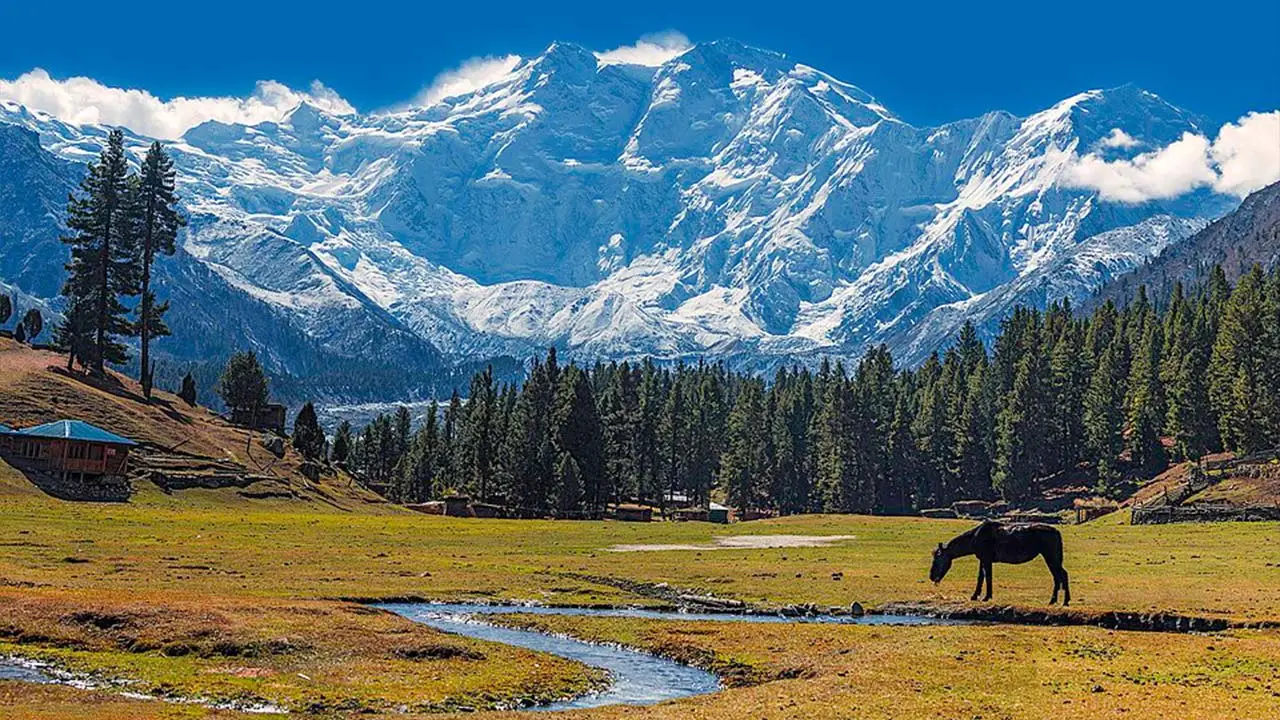
Conclusion: A Testament of Ice and Courage
Nanga Parbat truly justifies its fearsome title. Peaks like K2, Annapurna and Everest are also the deadliest mountains, but Nanga Parbat holds a special place of both terror and respect in mountaineering lore. The mountains' steep walls, sudden weather changes and massive avalanches help it to stand as one of the hardest and most dangerous climbs in the world.
Over the decades, Nanga Parbat has seen both heroism and heartache intertwined. Beginning with the early German missions in the 1930s to Herman Buhl's first solo climb in 1953 and the Messner brothers' tragedy in 1970, every story whispers through the icy slopes, deepening its legend. To this day, Nangas Parbat's name warns climbers that nature is powerful, unstable and must be respected.
Still, people attempt it. Climbers' aim extends beyond summiting; it is a test of character and skill. Climbers measure the limits of their courage and perseverance against daunting odds. The Nanga Parbat tests human endurance and spirit. It brings achievement to some and disasters to others. Many climbers say that standing right before Nanga Parbat feels like standing before something alive. It feels like something is watching from the mountain, waits and decides who may pass. Every generation of climbers is consistently drawn to the challenge of Nanga Parbat.
Some climbers come chasing glory and others seek peace or purpose. The mountain does not call every climber, but those who hear it can never ignore it. Each new journey adds another chapter to its long history. Even though there is a change in technology and experience, the harsh heart of the challenge remains the same. Until today, Nanga Parbat continues to test the question: Can the human spirit endure what the world's most unforgiving mountain demands?
The killer mountains do not seek to destroy; they teach climbers to respect the limits of human will.

